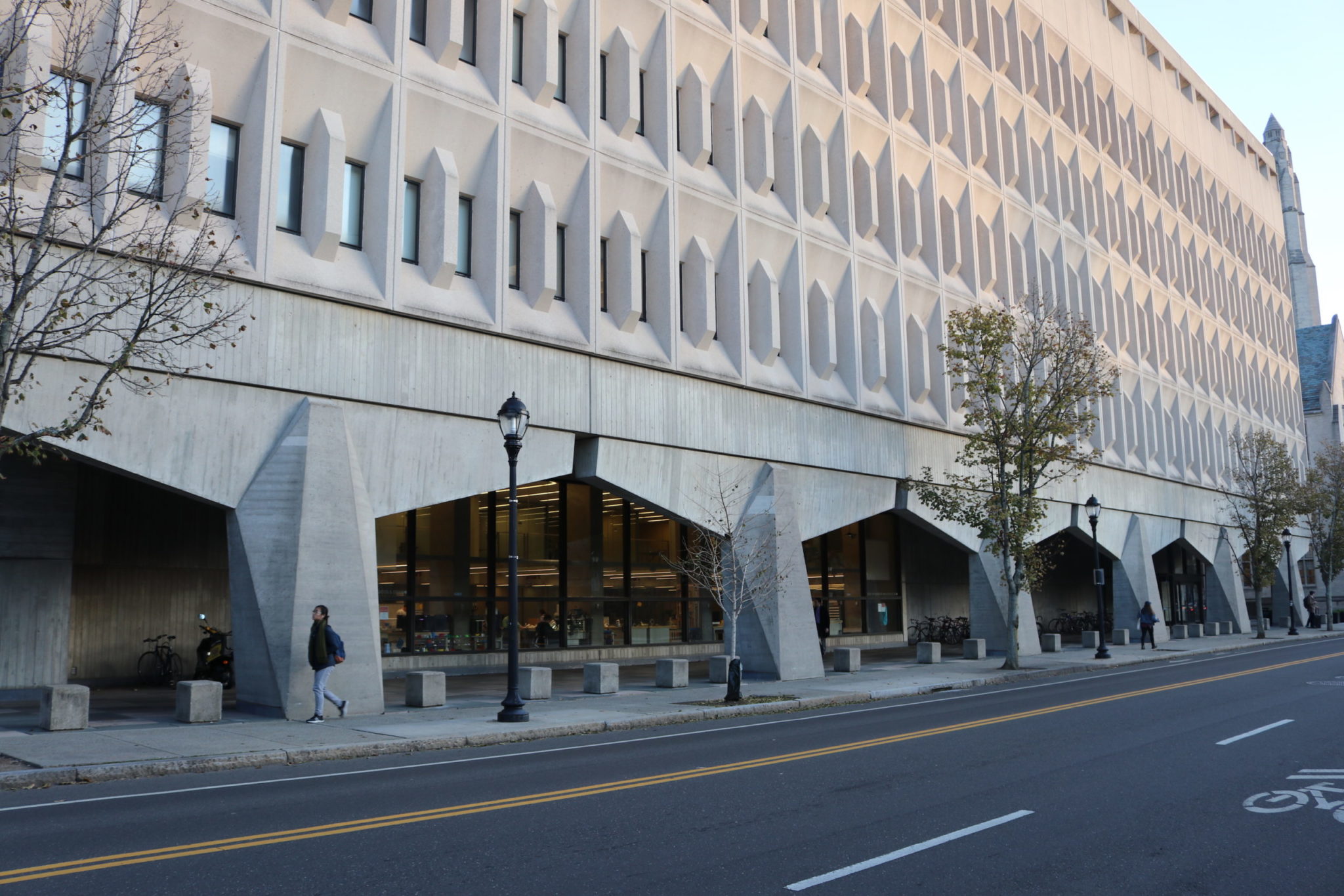
Kai Nip, Contributing Photographer
The New Haven Preservation Trust, or NHPT, released a self-guided virtual tour of New Haven’s 1970s buildings on Saturday, bringing the city’s modern and post-modern architecture to a new online audience.
Designed as part of the Docomomo US Tour Day 2020, a national event that aims to celebrate the Modern Movement of architecture, NHPT’s tour stops along well-known New Haven sites including the Yale Center for British Art, Crown Street Parking Garage and Antillean Manor apartment complex. The Elm City’s array of modernist buildings is particularly suitable for the tour, according to Elizabeth Holt, NHPT director of preservation services and tour curator.
“New Haven is an ideal city to see the potential of modern architecture,” Holt said. “We’re really well-positioned to champion this era of architecture, and show how different eras of architecture coexist together.”
The architectural Modern Era — broadly defined as the period from the 1930s through the 1970s — was often marked by bold glass, steel and concrete elements. The era includes the Brutalist, Art Deco and Minimalist movements, among others. Morse and Ezra Stiles Colleges, are often referenced as prominent examples of Modernist architecture at Yale. The two colleges were designed during the 1950s by architect Eero Saarinen after he graduated with a degree in architecture from Yale in 1934. For scholars of urban design and architecture, the Modern Era is often associated with urban renewal.
In New Haven, urban renewal and its associated redevelopment became a signature issue of the 1950s and 60s under the leadership of then-Mayor Richard Lee. Under Lee, city plans for urban renewal led to mass demolition in neighborhoods like Wooster Square, Downtown and the now-destroyed Oak Street. Many of the demolished buildings were replaced by modernist ones.
According to Yale associate professor of urbanism Elihu Rubin ’99, the 1960s preservation movement — during which organizations like NHPT took root — coalesced in response to those urban renewal programs. As Rubin teaches in his urban studies courses, modernism was the language of the redevelopment programs that disrupted what preservationists saw as historic districts and neighborhoods. Thus, according to Rubin, modernism became linked to the city’s destruction.
Today, however, Rubin said that the preservation movement has come to embrace parts of the Modern Era. According to Rubin, the modernist buildings have gradually become integrated into the tapestry of New Haven’s architectural heritage.
“Now, these buildings have in some sense freed themselves from the moral baggage of being associated with the clearance tactics of urban renewal, and are now being assessed on their own terms,” said Rubin. “The preservation has come full circle.”
Today, NHPT runs a New Haven Modern website, which highlights Yale modernist landmarks like the Beinecke Library as well as local buildings such as Dixwell Avenue Congregational Church. The website has an index of over 250 sites — some are still standing, and some are not.
Rubin also pointed out that New Haven’s sizable redevelopment efforts resulted in modernist buildings in many forms, from residential and affordable housing units to government and institutional edifices. The tour notably includes sites in neighborhoods beyond the core of downtown New Haven, such as Edgewood, Prospect Hill and Wooster. Many of these buildings, as Holt points out, will soon reach 50-year marks and become eligible for the National Register of Historic Places.
This year’s virtual tour is a modification from the NHPT’s usual annual in-person tours. Holt suggested that the tour’s online nature allows the Trust to cover the city’s modern architecture with greater depth while reaching a wider audience.
“Because it wasn’t an actual walking tour, we [were able to] spread out across the whole city,” Holt said. “[This year] presented us with a different opportunity that we usually have.”
Ramsay Goyal ’24, who was introduced to the tour through the Introduction to Urban Studies course taught by Rubin, told the News that the tour deepened his appreciation of New Haven.
“It gave me insight into New Haven’s history, helping to contextualize my place within it,” Goyal said of the tour. “Now, I’m more actively conscious of the people who have moved through this space before me.”
NHPT will hold its Celebration of Preservation 2020 event and annual meeting online on Oct. 29 at 6:30 p.m.
Isaac Yu | isaac.yu@yale.edu
Interested in getting more news about New Haven? Join our newsletter!







